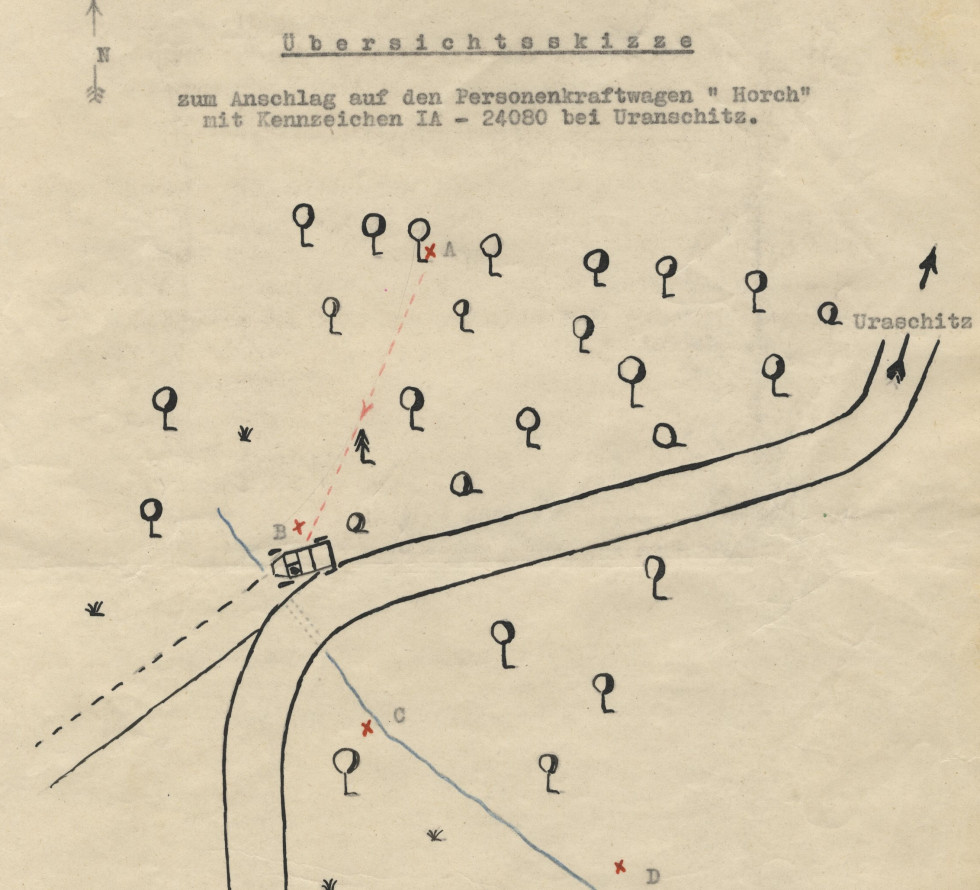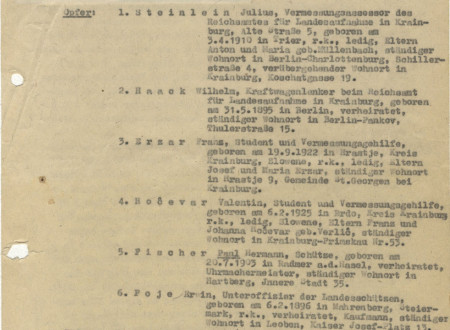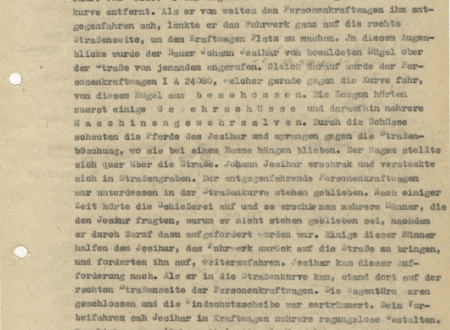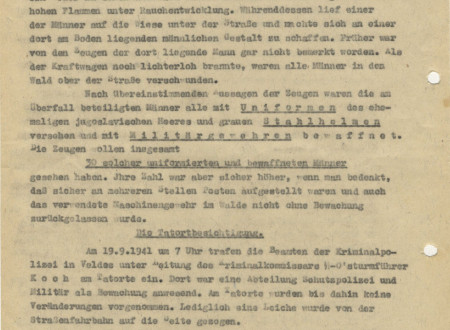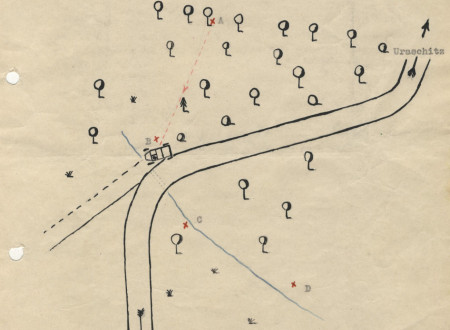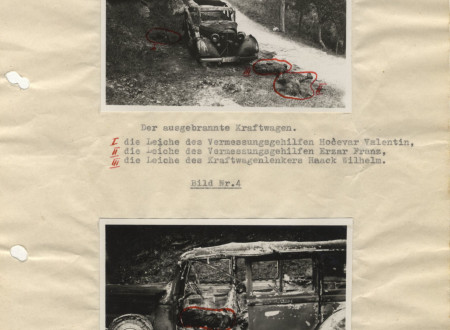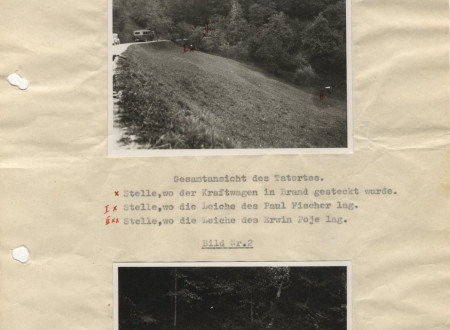Why Was Rašica on Fire in 1941?
Report of the German Criminal Police on the Partisan Attack near Rašica
On September 20, 1941, almost 77 years ago, the village of Rašica was set on fire as retribution for the partisan attack in which six passengers had been killed in a black Horch with car registration number IA-24080. The attack on September 18, 1941 was carried out by the Rašica company of the Kamnik battalion, which prior to the attack had spent several weeks hiding in the forest above the village. Believing the passengers in the car to be the members of the German secret police who were looking for their hidden camp, the partisans carried out the attack on the car. The Archives of the Republic of Slovenia keeps the original report about the incident written by the German criminal police in Bled on September 22, 1941. Enclosed to the report are sketches of the scene of the crime where the attack took place and eight rather self-explanatory photos.
On the day of the attack, a German land surveyor Julius Steinlein from the state land surveying office in Kranj set out for Rašica to inquire about a trigonometric point. He was instructed to do so as part of the process to mark German-Italian state border in Upper Carniola. Seated in the company car Horch, Steinlein was accompanied by the driver Wilhelm Haack from Berlin, two Slovenian student s and surveying assistants Franz Erzar and Valentin Hočevar, and two armed members of the Riffle battalion (Landschutz Battalion) in Lienz – non-commissioned officer Erwin Poje and soldier Paul Fischer. Due to repeated attacks of the »Communist violent gangs«, the State land surveying office demanded that its employees in the field have military protection. In the afternoon, at about 5.15 pm, Horch was driving back from Rašica (Germ. Uraschitz) towards Zgornje Gameljne (Germ. Gamling). At a point where the steep road leading in a wide arch around the forested hill took a sharp turn left, the car was machine-gunned and fired at. Once the shots died down, several men appeared, wearing the former Yugoslav military uniforms and carrying military guns and grey helmets. A witness of the attack, mentioned in the report, said there were around 30 men.
The scene of the crime had been guarded by the protection police (Schutzpolizei) until criminal police arrived the following morning. At the scene, members of the criminal police saw the burnt down car and horrifically burnt and almost unrecognizable bodies of the land surveyor, the driver, and the two surveying assistants. The shot through bodies of the accompanying two military officers were found several metres down the road, leading the writers of the report to believe that they jumped out of the car and ran for cover once the attack started. The attackers took soldier Fischer's weapons (gun, bayonet, and bullet belts), while officer Poje lost not only his weapons, but was also found without his service cap, army trousers and shoes. Upon the inspection of the surrounding area, around 60 empty bullet casings were found in the woods where the machine-gun was supposedly stationed.
By obtaining testimony from the farmers, who at the time of the attack were working in the field, and by thorough investigation of the scene of the crime, German criminalists were finally able to determine what had happened. Partisans were believed to be monitoring Steinlein's workgroup ever since its arrival in Rašica, all the time preparing to make an ambush at a strategically good location. The driver was probably wounded already by the first shots that were fired, which made him turn right, stop the car and thus make it even more visible and exposed for the machine-gun ambush. After some time, the attackers came closer to the car and shot or stabbed the surviving wounded, let the gas out of the reservoir, splashed it over the car and set it on fire. Surveying devices, maps and sketches that were in Julius Steinlein's briefcase were not found – the police suspected they were consumed by fire or stolen by »the bandits«.
The report furthermore stated that protection police and gendarmerie were making extensive rounds in the surrounding area of Rašica. During a German chase Stane Kosec, the commander of the Rašica company and one of the chief suspects for the above mentioned attack, was wounded and on October 17, 1941 he was shot near Radovljica.
On September 20, 1941, units of the 2nd company of the 171th reserve police battalion surrounded the village of Rašica, burnt it down and sent its villagers into exile to Croatia and Bosnia.
Tanja Žohar


